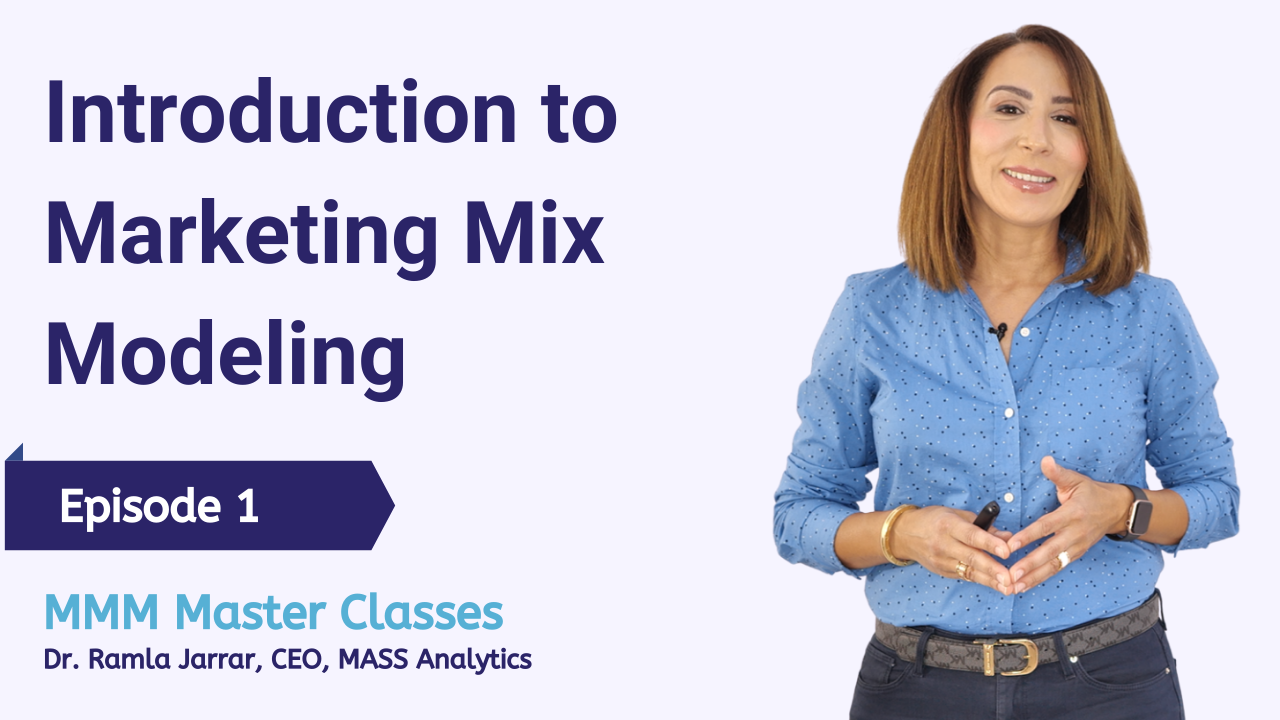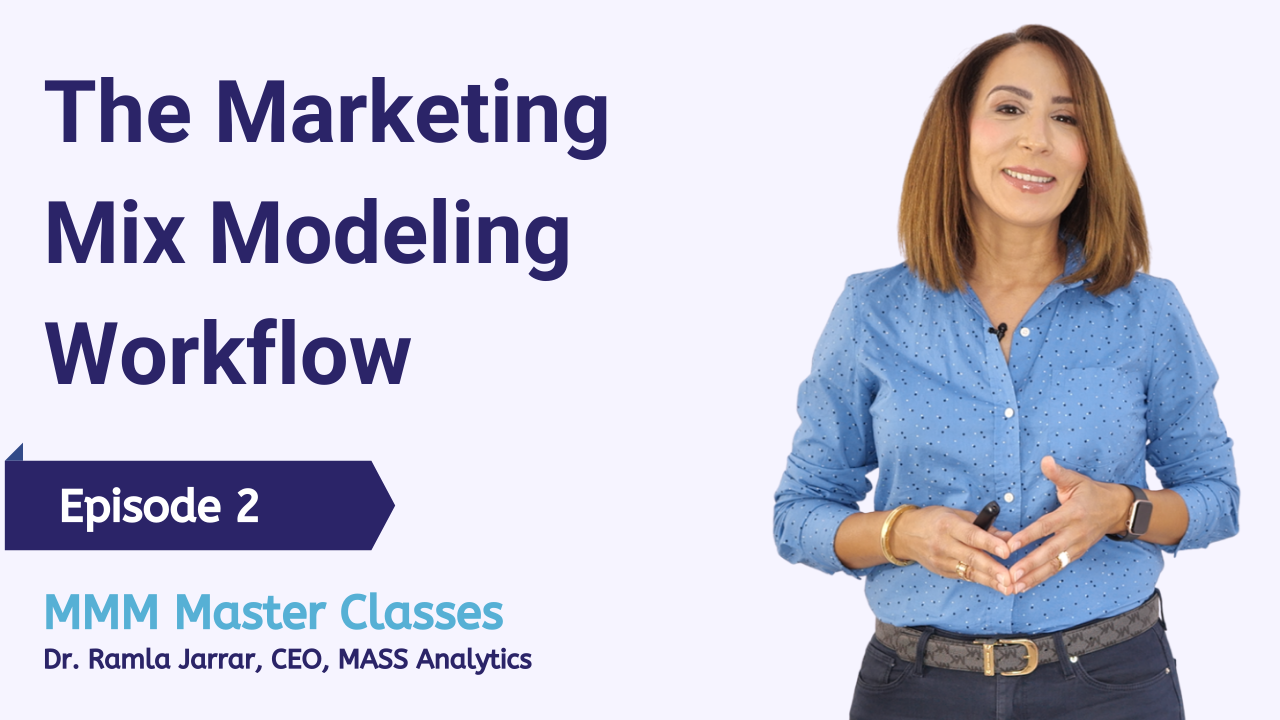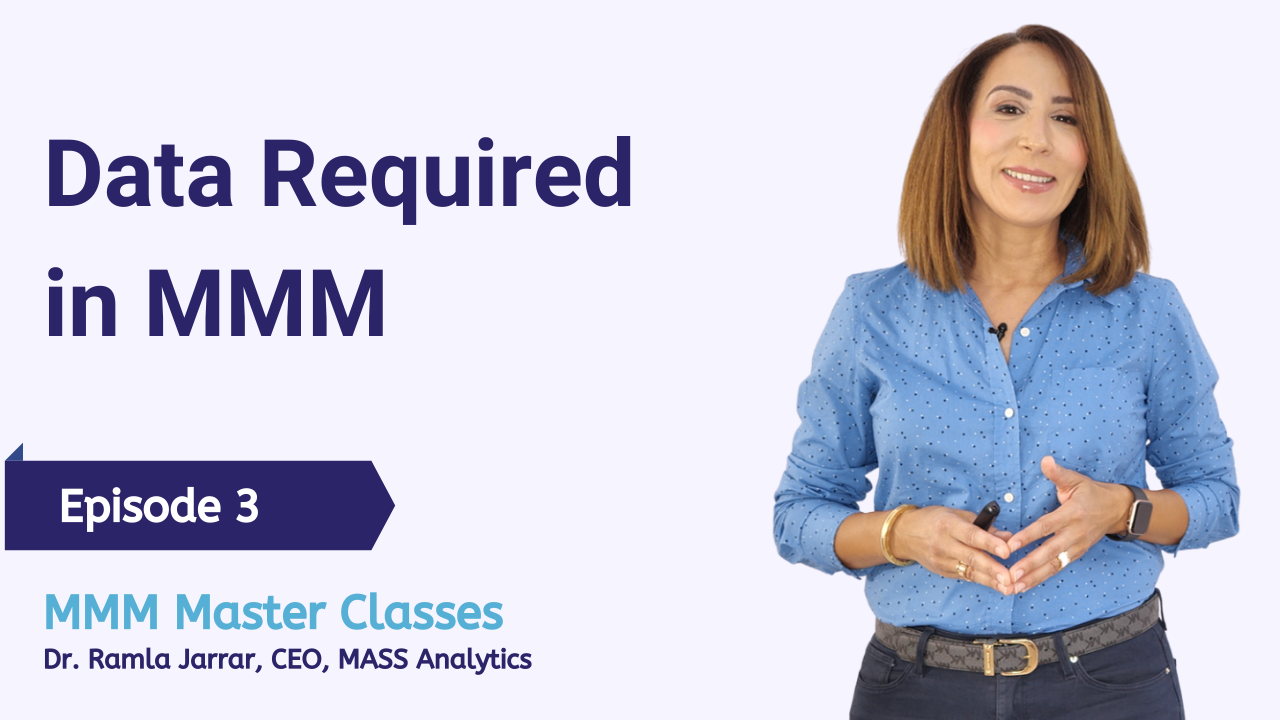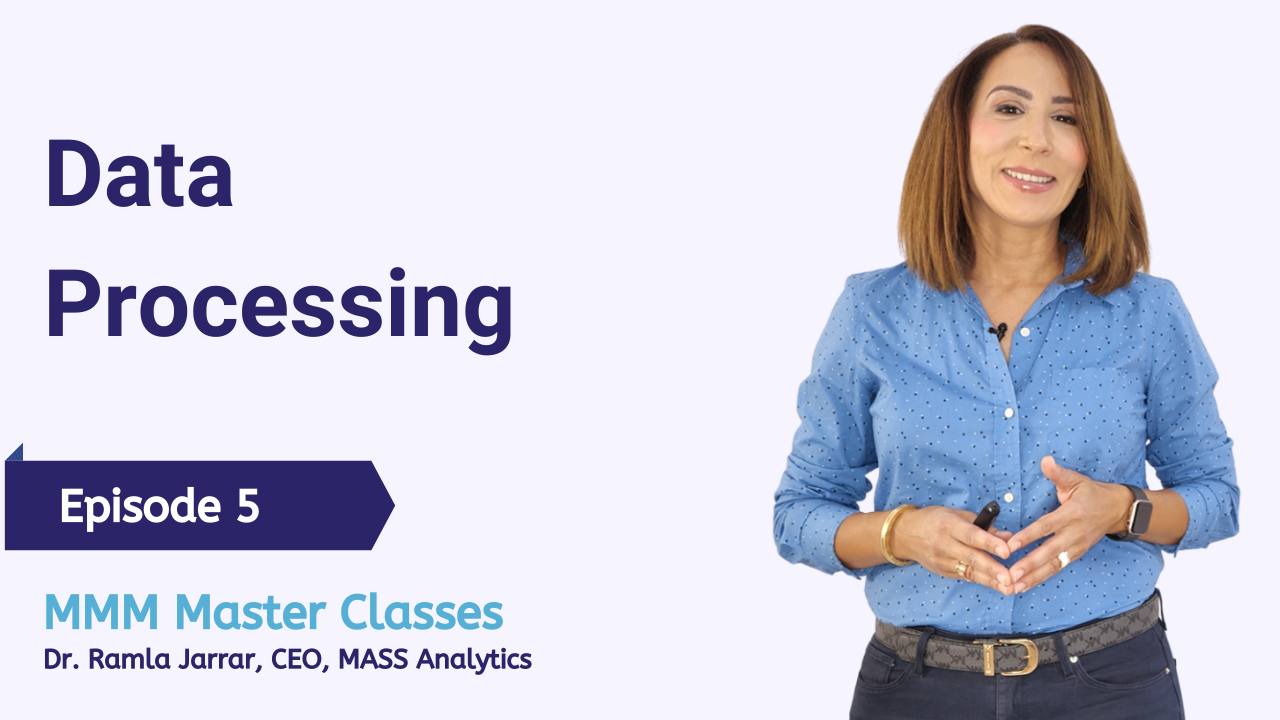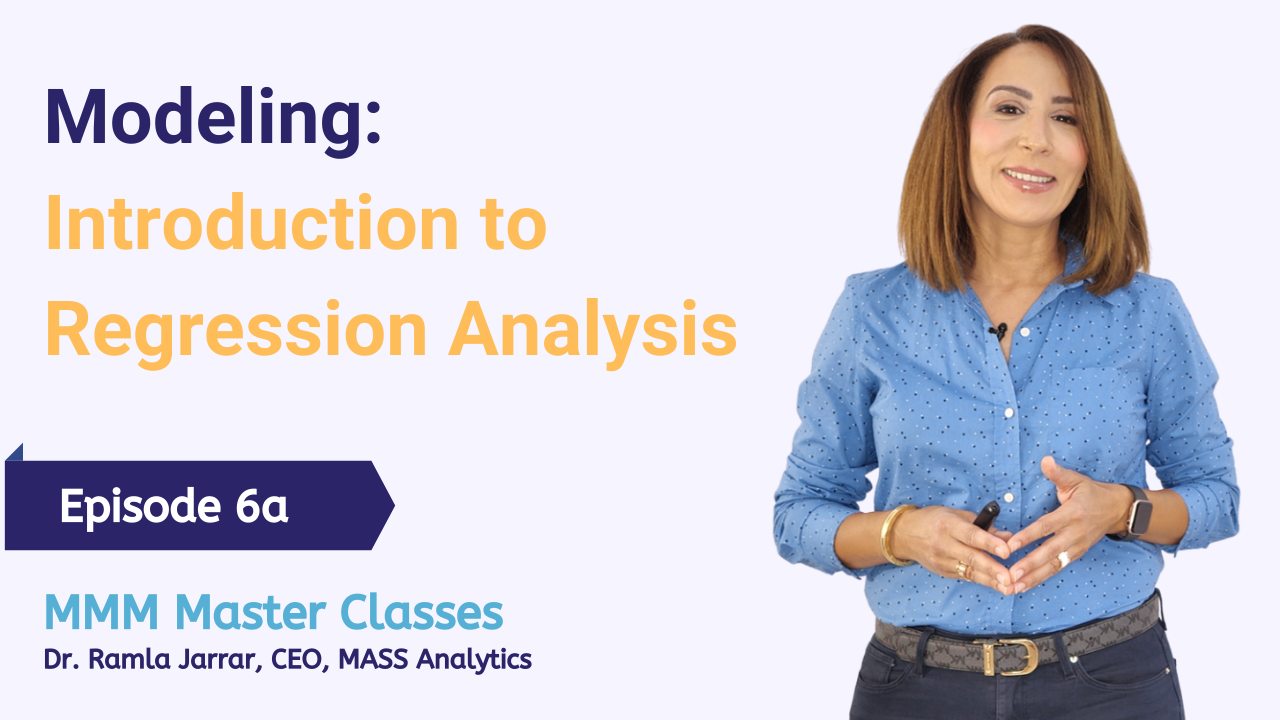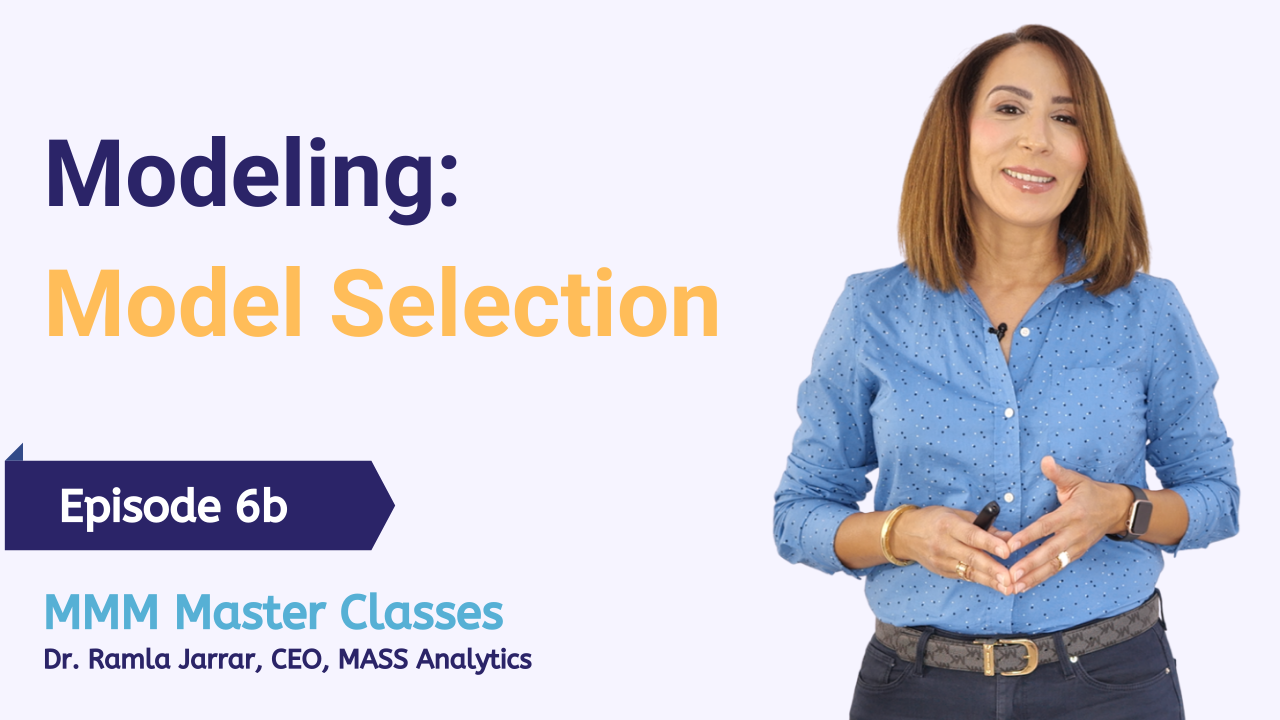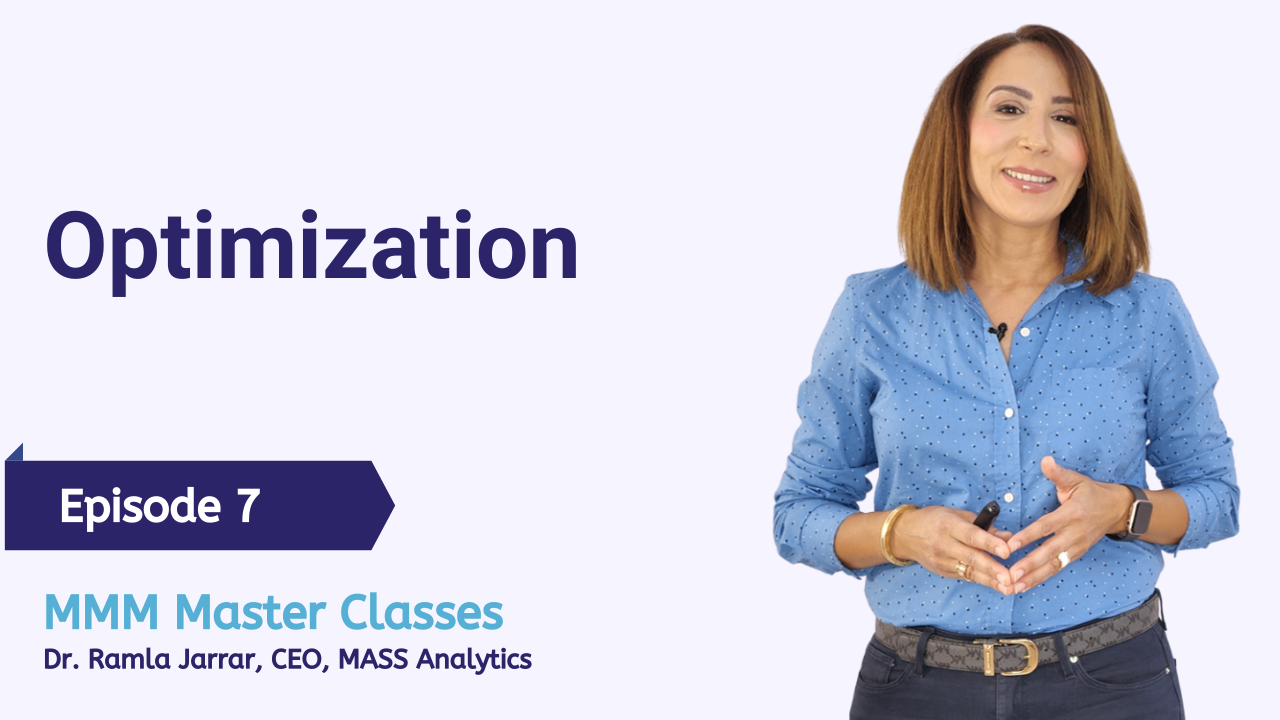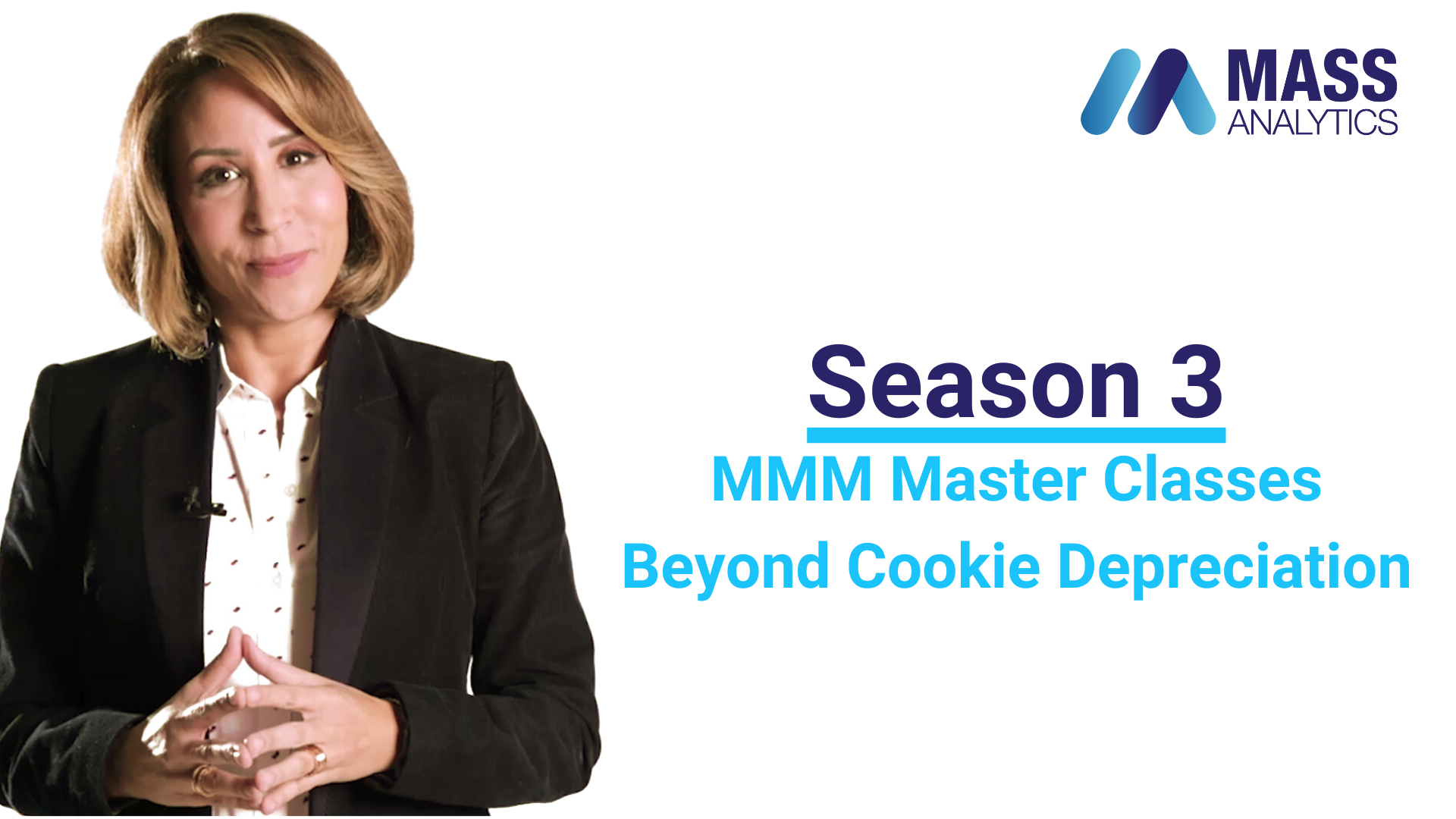Season 1
Marketing Mix Modeling Course
We have designed a comprehensive Marketing Mix Modeling Course composed of eight episodes that cover the full process of delivering a MMM project to help you master the MMM practice.
In each episode we share different perspectives and best practices based on MASS Analytics’ experience running MMM for multiple verticals.
Episode 0
Introduction to The Marketing Mix Modeling Course
Episode 1
Introduction to Marketing Mix Modeling
MMM is based on applying advanced statistical methods (econometrics) to historical data to understand the impact of every single sales driver, measure the MROI, and predict future performance.
Discover the world of Marketing Mix Modeling, how it fits in the whole Marketing Strategy, and how it became an essential tool for data-driven decision making.
Episode 2
The Marketing Mix Modeling Workflow
A successful MMM exercise needs to be reliable, repeatable, scalable, and accessible to people with little marketing analytics background. Adhering to a clear and structured workflow is, therefore, a must.
Discover the workflow and the different phases involved in the process of creating an efficient Marketing Mix Modeling project end-to-end.
Episode 3
Data Required in Marketing Mix Modeling
The first step in ensuring the success of a Marketing Mix Modeling project is to make sure the data collection phase captures all the data needed for the project.
Learn about the different data sources and categories that need to be collected and discover tools that can help you run this phase successfully.
Episode 4
Data Exploration in Marketing Mix Modeling
Once all data needed for the project is collected, the data check phase starts. Exploring, charting, and analyzing each piece of data is an essential step.
Learn about some of the important univariate and multivariate statistics as well as exploration techniques that help you build sound modeling hypothesis.
Episode 5
Data Processing in Marketing Mix Modeling
A robust model should make sense both statistically and commercially. Raw variables need to be transformed to reflect the true consumer behavior.
Discover the most popular processors in MMM including AdStock and learn about calendar variables, processed variables, and chain processing.
Episode 6a
Introduction to Regression Analysis in MMM
The fundamental output of a Marketing Mix Modeling project is based on the Model. During the Modeling phase, the analytics team needs to dive deeply into the statistical details and specifications to make sure that the overall model is robust and ready to be shared with the stakeholders. Learn how to evaluate your model through statistical model evaluation criteria and how to use regression analysis.
Episode 6b
Marketing Mix Model Selection
Model selection is a procedure to estimate regression models in which the choice of predictive variables is carried out by a defined procedure.
Learn how to select your model using the stepwise procedure and genetic algorithms.
Episode 6c
Modeling – Contribution & ROI Calculation
Contribution is the impact that a specific variable has on a KPI or a dependent variable. While ROI is used to measure the efficiency of a specific media or marketing activity. It could also be used to compare the efficiency between different media or marketing activities. Learn how to leverage the relationship between ROI and contribution for better optimization decisions.
Episode 6d – Part 1
Intro to Advanced Modeling Techniques Pooled Regression
Pooled Regression can be used when the model is created at the regional level. This means that the details are crucial. Hence the analyst should have available time series of cross-sections i.e., data that has observations over time for several groups or cross-sections. The latter could be a region, store, DMA, consumer segment, etc.
Episode 6d – Part 2
Intro to Advanced Modeling Techniques Log Linear Modeling
A linear model does not really help the analyst understand and model how consumers behave in real life. Al log-linear model could be used to solve this issue. It is a multiplicative model that is composed of two main categories of variables, which are the relative and the incremental variables.
Episode 6d – Part 3
Intro to Advanced Modeling Techniques Nested Modeling
A Nested Model depicts an immersive relationship between multiple linked KPIs and independent drivers. Two models are nested if one model contains all the variables of the other in addition to (an) other variable (s).
Episode 7
Optimization – Marketing Mix Modeling
Optimization falls at the last part of the MMM workflow chart (the Deployment phase). It is based on the concept of the diminishing returns curve. Optimization is one of the layers of insight with which the marketing analytics company is meant to provide the client based on the measurement that they do in the first part of the MMM building block pyramid.
Episode 8
Prediction – Marketing Mix Modeling
The essence of the prediction phase is to tell the client what incremental sales they will make. The marketer needs to gather different scenarios that the client wants to implement the following year and use the modeling results against the measurement part.





